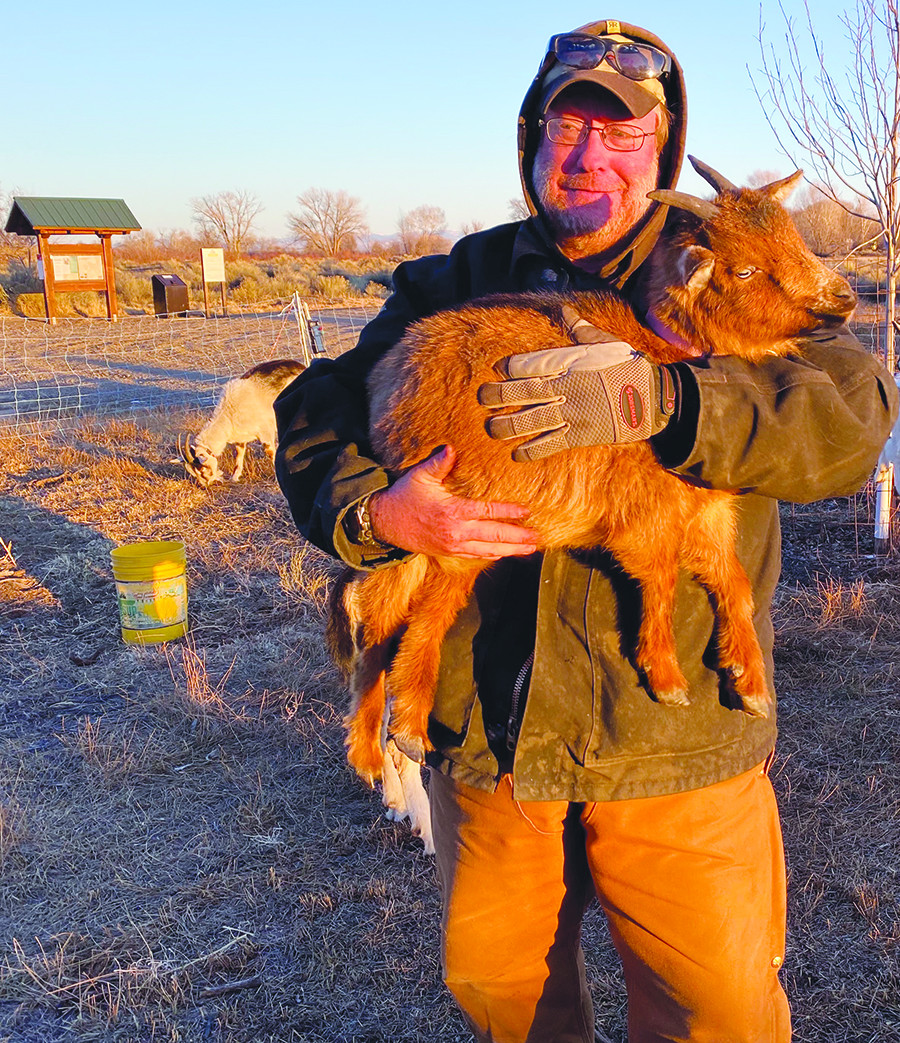Alamosa herds four-legged fire crews

Voracious herbivores replace herbicide
ALAMOSA — Leonardo da Vinci is credited with once stating that “in nature, nothing is lacking, nothing is superfluous.” The herd of goats owned by Ben and Amity Nicholson are a living and eating example of that principle in assisting the City of Alamosa in wildland fire management and controlling noxious weeds.
According to John Reesor with Alamosa Parks and Recreation, the city was awarded a $10,000 grant late last year from the Colorado Department of Agriculture for a pilot program to deploy and employ goats as four-legged firefighters. All the goats need to do is show up and eat grasses and plants that could serve as fuel in a wildfire.
Reesor said he met goat herders who own White Shell Mountain Ranch near Blanca at the Alamosa Farmers Market last year. Ben told Reesor his goats were available on a contract basis for targeted grazing services. Today, the goats (and Ben) are grazing under contract in Alamosa.
Over the last several days, Nicholson and 17 goats have been busy at work at the Malm Trail network in South Alamosa. The goats are kept in a 40-foot by 40-foot wire fence enclosure, equal to about 1,600 square feet (about half the area of a tennis court), where they are free to eat as much vegetation as they like. The (adorable) goats can consume about 1,200 square feet of vegetation in a good day, says Nicholson. After the ruminants devour the plants in the enclosure, Nicholson moves it and the goats to another nearby location.
The area where the goats are currently grazing is what firefighters call the "wildland urban interface," the confluence of open land and areas that contain the trappings of human development such as houses. Using prescribed fires in such areas can be risky and sometimes have catastrophic results. Last year, such a burn in New Mexico accidentally started a 300,000-acre fire that destroyed 1,500 structures including homes.
The goats pose no fire risks, they also alleviate the need to use chemical herbicides.
“The goats will eat the weeds, aerate the soil with their hooves, and add manure to the soil. We will follow behind the goats and lay down native grass seed mix to encourage growth of healthy vegetation to hopefully choke out the regrowth of weeds. This is all a part of our integrated noxious weed management strategy,” says Reesor.
According to Donny Benz, co-founder of the Goatapelli Foundation, a group that supports and promotes the use of goats in land and fire management, “There is no machine that can do what a goat can do.” The founder of the group, Lani Malmberg, has a herd of about 1,500 goats she contracts out in 15 Western states.
Aside from utilizing their goats as grazers, Amity Nicholson uses goat milk to make soap. With her own recipe, she blends oils, lye, and goat milk into her proprietary product that she sells at her new location on San Juan Avenue in Alamosa as well as other locations.
For those interested in learning more, Colorado State University has an informative publication regarding goats and plant/fire management on its website Guide for Using Goats to Manage Weeds in Urban Spaces that can be found here: https://sam.extension.colostate.edu.



